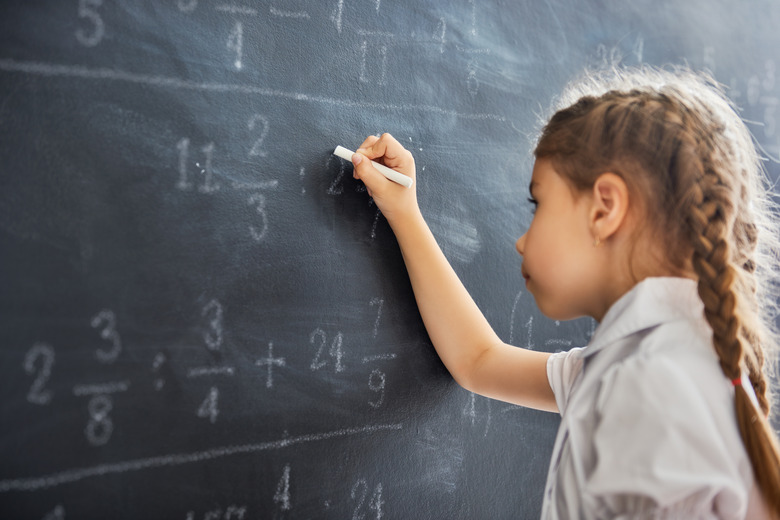Compatible Numbers For Third Grade Math
In third grade math, teachers mainly emphasize compatible numbers in addition and subtraction. Compatible numbers are numbers that are easy to work with mentally, such as parts of 10. Students who memorize 8 + 2 = 10 can more easily reason that 10 – 2 = 8. By third grade, students can also quickly answer 80 + 20 or 100 – 20 by recognizing compatible numbers.
TL;DR (Too Long; Didn't Read)
Compatible numbers allow students to perform mental math quickly and serve as building blocks for abstract reasoning. Students begin developing this skill in kindergarten with parts of simple numbers and add other knowledge over the years, including parts of 10, parts of 20 and benchmark numbers.
Friendly Numbers
Friendly Numbers
Compatible numbers are "friendly numbers" that make it quicker to solve problems. By fifth grade, students can find what friendly numbers to use in estimating the answer to questions such as 2,012 ÷ 98. Those who understand estimation use 2,000 ÷ 100 to approximate an answer. When a student understands parts of each number from 1 to 20, that knowledge later becomes a friendly helper when confronted with solving more complex questions such as 33 + 16.
Compatible Number Hiding Game
Compatible Number Hiding Game
The skill of identifying compatible numbers begins in kindergarten or earlier as children learn parts of numbers ranging from 3 (1 + 1+ 1 or 1 + 2) to 10. A common way to learn compatible parts of small numbers in kindergarten and first grade is to play the "hiding game." After displaying six cubes, a player holds them behind her back, brings out two and asks the other player how many are "hidden."
Benchmark Compatible Numbers
Benchmark Compatible Numbers
Benchmark numbers are another form of compatible numbers that third graders should know. These numbers end either in 0 or 5 and make the process of estimating much easier; for example, students can use 25 + 75 to approximate the sum of 27 + 73. Using mental math to calculate a reasonable answer to "about how big" a sum or difference will be demonstrates development of the same skill adults use in situations like estimating whether income is sufficient to pay bills.
Parts of 10 and 20
Parts of 10 and 20
Third graders are usually able to quickly answer questions related to benchmark numbers, such as the difference when subtracting 20 from 40. However, they may stumble when calculating answers related to parts of 10 that they haven't memorized, such as 40 – 26. Even if students understand that it is necessary to trade a ten so that the ones column becomes 10 – 6, their thinking may slow if they haven't memorized that 4 completes 6 to make 10. Similarly, if they don't automatically remember that 6 + 4 = 10, they will be slower to calculate 16 + 4, a parts-of-20 fact.
Becoming Independent Problem Solvers
Becoming Independent Problem Solvers
Understanding compatible numbers is a tool that helps students become quick, independent problem solvers who don't need to ask friends for help. It is also a major step toward becoming abstract rather than concrete thinkers. Instead of depending on concrete objects called manipulatives (counters, linking cubes and base-10 blocks) for modeling answers, students rely on automatic knowledge about how the number system works.
Cite This Article
MLA
Rudnicki, Alicia. "Compatible Numbers For Third Grade Math" sciencing.com, https://www.sciencing.com/compatible-numbers-third-grade-math-8349044/. 21 May 2018.
APA
Rudnicki, Alicia. (2018, May 21). Compatible Numbers For Third Grade Math. sciencing.com. Retrieved from https://www.sciencing.com/compatible-numbers-third-grade-math-8349044/
Chicago
Rudnicki, Alicia. Compatible Numbers For Third Grade Math last modified August 30, 2022. https://www.sciencing.com/compatible-numbers-third-grade-math-8349044/
